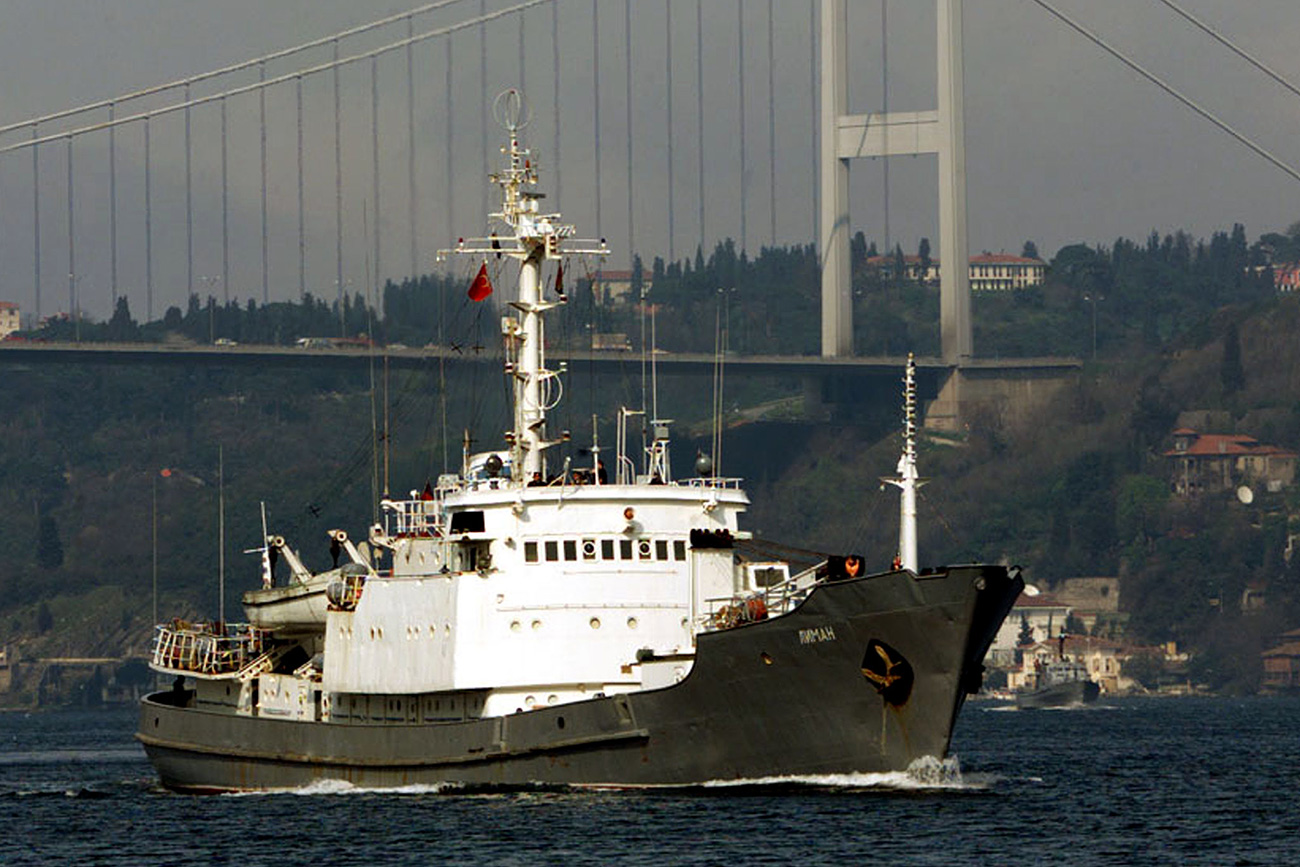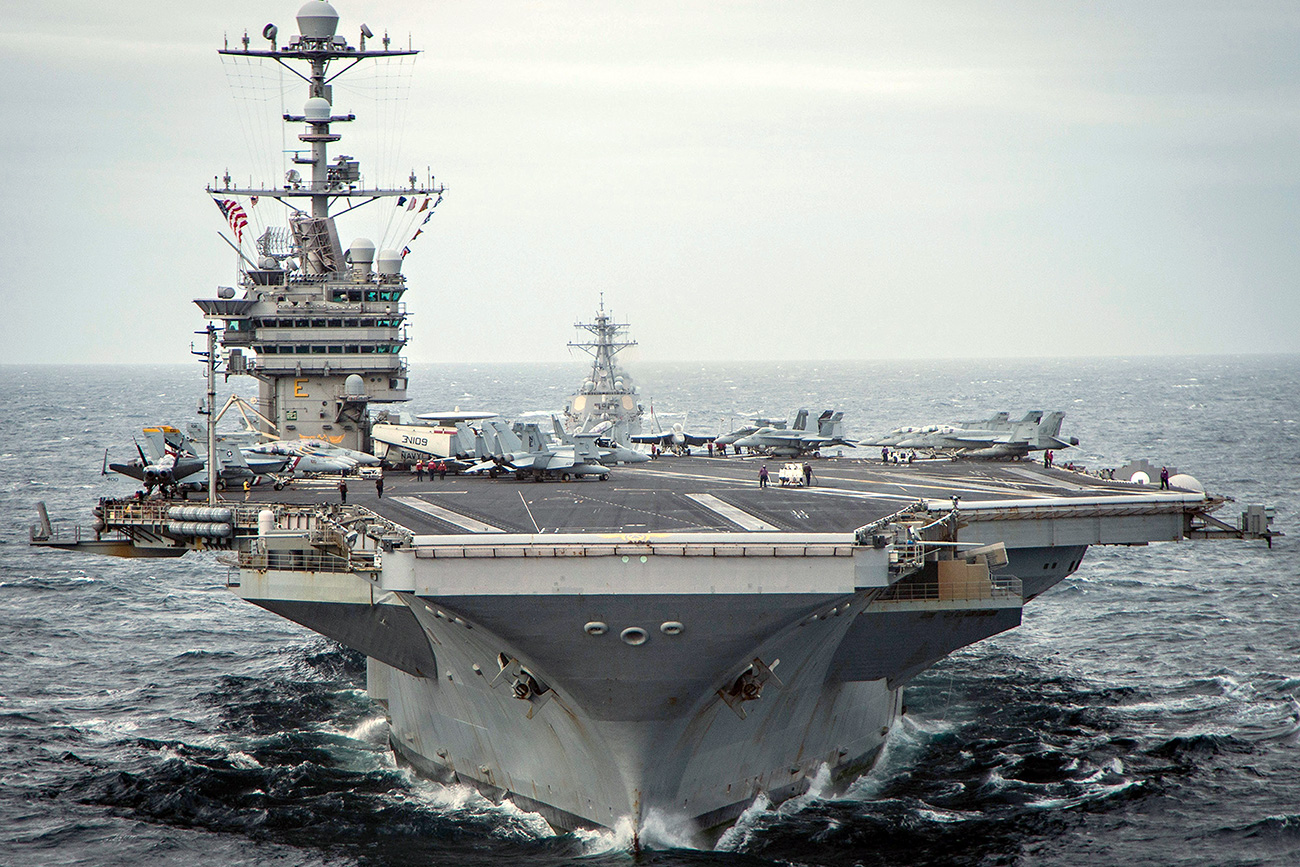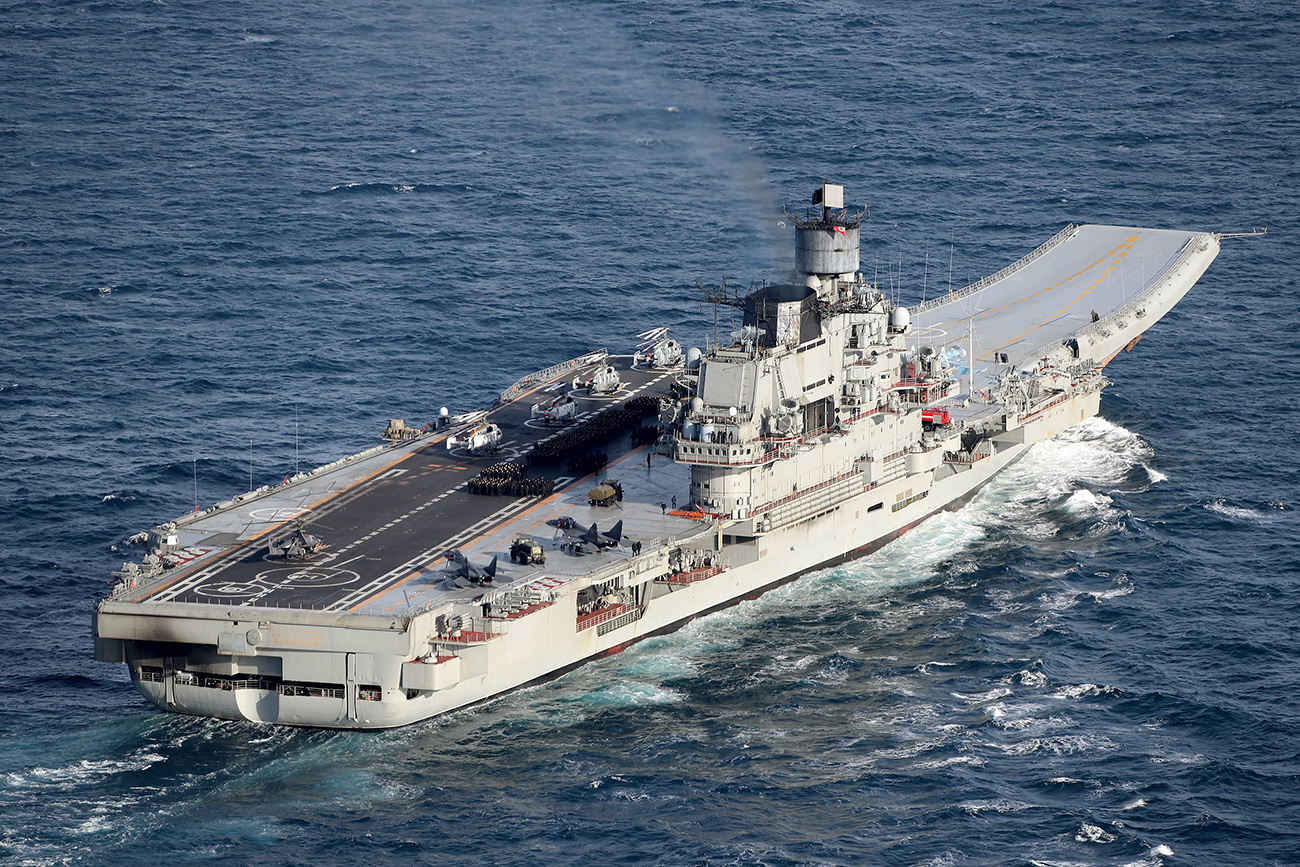Why a sunken Russian intelligence ship was of little use to NATO

The Russian intelligence ship Liman sails past the Bosphorus Bridge in 1999. Source: Reuters
A Russian naval intelligence ship that sank after a collision with a merchant freighter on the Black Sea near Istanbul on April 27 was of little use to NATO, and it is unlikely that its sinking was on account of sabotage by the alliance, defense analysts told RBTH.
The Liman’s crew is believed to have detached all removable devices before the ship sank.
“Before the ship sunk, the crew would have definitely destroyed any parts that cannot be dismantled,” a Russian naval source told RIA Novosti on April 28.
Doubts have been raised as to whether the ship (and its software) was of interest to NATO’s intelligence services. The Liman was equipped with a whole set of sonar systems and foreign instrumentation signals intelligence hardware that made it capable of capturing data from a large numbers of ships.
The ship had an advanced Don radar system and Bronze hydro-acoustic system.
Alexey Podberezkin, the Director of the Centre for Military and Political Studies at the Moscow State Institute of International Relations (MGIMO University), told RBTH that he ruled out NATO sabotage in the sinking of the Liman.
Military expert Vasily Kashin is of a similar view. He told RBTH that there is no reason to look for the NATO marks in connection with the sinking of the ship. The cause of the accident was bad weather conditions (heavy fog) combined with errors made by the crew, Kashin said.
The small size of the ship (full displacement of 1560 tons) and a significant age (it was commissioned in 1970) hastened its sinking, he added.
No attempts to raise the ship - Russia
The Liman will not be raised from the bottom of the Black Sea, an official from the Russian Navy told RIA Novosti.
The official said that the ship was of a “fairly advanced age” and was at the bottom of the sea at a depth of about 90 meters.
The refusal of the Russian Navy to take urgent measures for the recovery of the Liman may indicate the absence or destruction of potentially interesting equipment or classified information. The design of the ship itself is of no interest to Russia’s rivals, Kashin said.
Besides, NATO already had access to ships that are similar to the Liman. The alliance would have had access to the Jupiter intelligence ship, which belongs to the same 861M project as the Liman. The Jupiter was transferred to Ukraine during the partition of the Black Sea Fleet in 1996, and became a part of her naval forces (until 2013).
Thus, Kashin said, the equipment of the Liman that was installed there in Soviet times was not particularly valuable.
Major modernization was not carried out, therefore the recorded data, documents stored on the ship, and small electronic devices could be of little value, Kashin added.
The ship sank on April 27 when it collided with the Youzarsif H, a Turkish merchant vessel. It took three hours for the ship to sink, giving a nearby Turkish ship enough time to rescue the Liman’s 78 crewmembers.
The Liman monitored the U.S. naval group in the Adriatic Sea during the 1999 NATO bombing of Yugoslavia.
If using any of Russia Beyond's content, partly or in full, always provide an active hyperlink to the original material.
Subscribe
to our newsletter!
Get the week's best stories straight to your inbox

